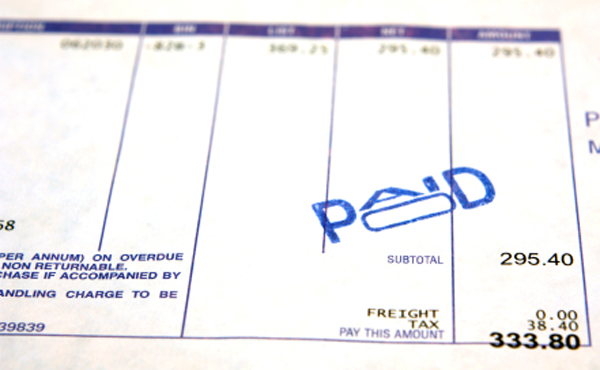Editor’s Note: As we look back over the last decade, we thought it’d be fun to look at some of the big themes we wrote about ten years ago. How do you think we did?
I have a good feeling about Accounts Payable (AP) in this decade. In recent years, there has been increasing momentum within the marketplace for AP transformation. Not the kind of broad-based globally-accepted kind of transformation that we have seen in procurement or even in human capital management… not yet, anyway. Although they often lack broad applicability, there are now a few success stories in each industry that can be modeled and then advanced by the next wave of AP departments in said industry. This next wave is chomping at the bit to get started. Others, however, remain locked in the past and, except for the constant work-day smoking and drinking, may as well be operating in the time of Mad Men. Here are 10 strategies for AP success in 2010:
For those getting started:
1. Define and detail each step (Receive – Process – Pay) in the accounts payable process. Exception management deserves extra attention since it is by far the largest time-taker. There’s extra credit for those that try to simplify every step.
2. Provide ongoing staff training to improve processes. Establish baseline performance metrics and benchmark results going forward. Encourage healthy competition and award prizes for the biggest improvement and to top performers.
3. Communicate the AP process to all internal stakeholders. Helping your internal clients and partners understand the general set of AP processes and activities, will help establish a reasonable set of expectations of performance and response time on interactions; when an inquiry is made, for example. Be open to feedback.
4. Centralize operations. AP within the line of business can be effective to a degree. The market trend however is to move operations to a shared services or centralized function. The ability to establish and leverage best practices and aggregate budgets can have a near-term impact. Once processes are standardized and fully automated, you could revert back to a decentralized… but why would you?
For those that have been thinking transformation:
5. Build a business case for ePayables (AP automation). I’m working on a webinar on this specific topic this week. I’ll post details on that soon. The case for investment in ePayables is pretty straightforward: take your current all-in costs to receive, process, and pay a paper invoice. Look at the average cost to manage that same process in the future electronic state. Make a reasonable estimate (maybe 50% to 60% of the average number given to you as reasonable by solution providers) as to the number or percentage of invoices that will be converted to electronic in each of the first 4 or 5 years. Deployment is not so complex (integration, however can be tricky) and enterprises get their full payback in this area in a year or two. And that’s without counting the potential working capital benefits from early payment discounts and strategic payment management.
6. Plan for the long-term. As you begin to consider an AP transformation and automation (and make the case for it), current budgets may get you where you need to go this year. If that is the case, develop a view of the desired future state and then work back from there to see what can be done in 2010. Make decisions today that are aligned with the future state.
7. Partner with other key stakeholders. Don’t go it alone. In general, the more voices that are aligned and advocating for transformation, the better. Partners in procurement, treasury, and IT can help improve the prioritization and budget levels of a project. There will be some trade-offs in the decision-making process, but this is reasonable since the feedback of true stakeholders should be incorporated. Is the goal of the initiative “improve AP operations” or is it “improve AP operations, as long as we retain control?”
For those advanced AP departments:
8. Focus on visibility. When you focus on and ultimately achieve enterprise-level visibility for AP operations, good things will happen. Review all areas (Receive – Process – Pay) to determine if AP staff and managers have full visibility. Once that is achieved, provide access and visibility to all internal stakeholders. Next, work to get invoice status visibility for your suppliers. Web-based invoice status visibility is a nice feature for an accounts receivable department to have, particularly if cash and credit are tight. Use supplier visibility as a carrot to entice suppliers to become enabled on (i.e. able to actively use) the ePaybles platform.
9. Set a goal for percentage of electronic payments. A migration from paper checks to electronic payments does not happen organically. A catalyst is needed and what better catalyst than an aggressive internal goal. I am delivering a webinar on ePayments and Payment Networks later this month. I will share the details in a subsequent article.
10. Network with other AP leaders. The industry is sorely wanting for clear and accessible best practices in AP transformation that can be uniformly applied or mirrored. Yes, there are a great number of individual success stories; but, in aggregate, these stories lack a common and cohesive framework. Having a crowded solution provider landscape does not help. Industry standards will benefit all parties and should be led by practitioners and associations, with some solution provider support.
While CPO Rising will spend more time dedicated to the sourcing and procurement side of the source-to-settle process, ePayables is a topic of personal interest and one that will be revisited on these pages. Besides, CPOs benefit from visibility into AP operations and should seek it if their department does not have it.

